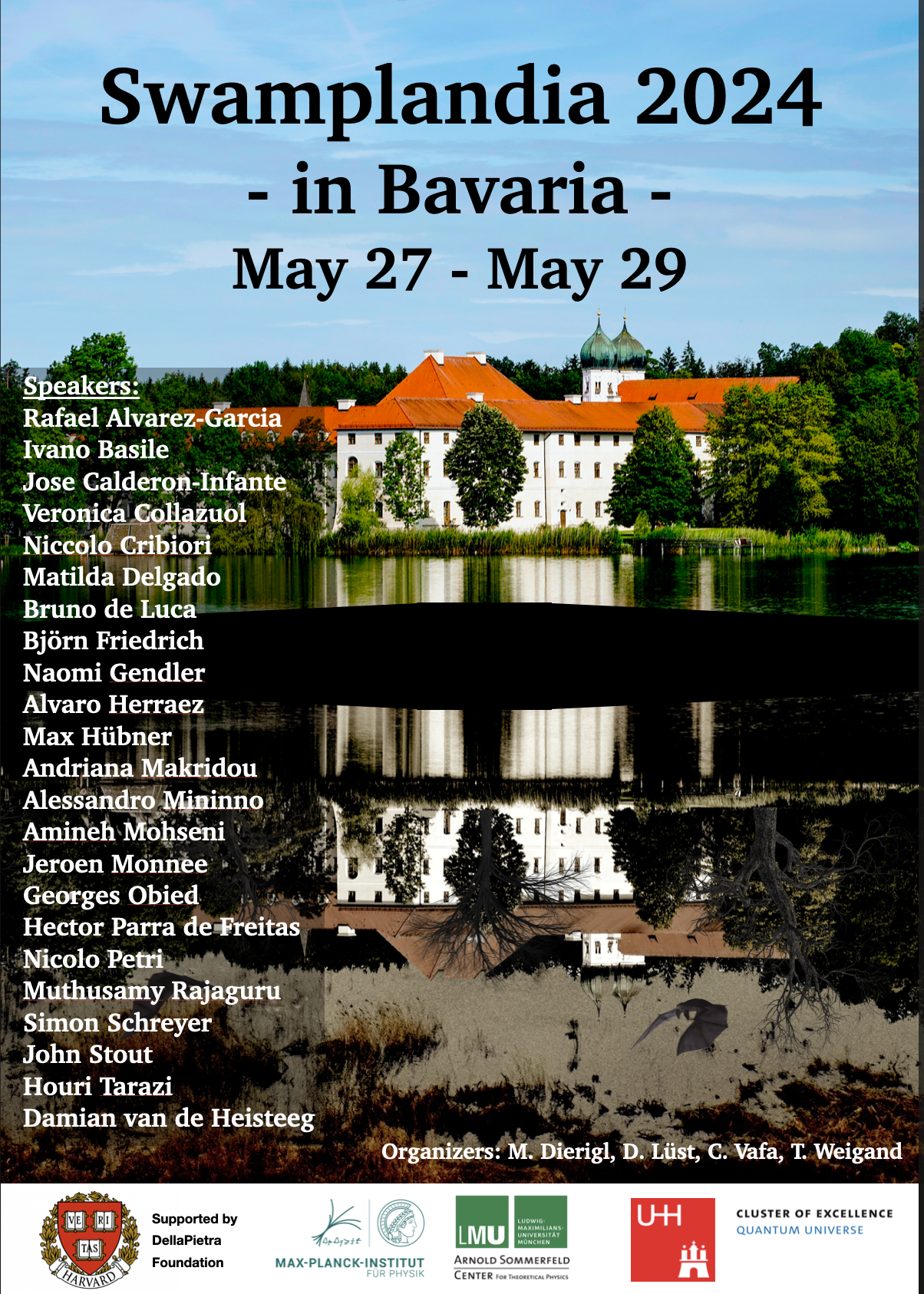Swamplandia 2024 - in Bavaria
Seeon Abbey
The next installment of the "Swamplandia" conference series will happen in the beautiful "Abbey Seeon" in southern Bavaria.
The conference will host 21 half-hour talks of young scientists on a broad spectrum of topics within the Swampland Program (see the poster).
For travel information see the pdf "How to get to Seeon" below.

List of participants:
Rafael Alvarez-Garcia (DESY)
Roberta Angius (IFT Madrid)
Fien Apers (Oxford)
Ivano Basile (MPP Munich & LMU)
Florent Baume (Hamburg University)
Kaan Baykara (Harvard)
Bruno Bento (IFT Madrid)
Leonardo Bersignotti (MPP Munich)
Ralph Blumenhagen (MPP Munich)
Noah Braeger (UPenn)
Jose Calderon-Infante (CERN)
Gabriele Casagrande (Polytechnique)
Alberto Castellano (IFT Madrid)
Veronica Collazuol (Saclay)
Niccolo Cribiori (MPP Munich)
Mirjam Cvetic (UPenn)
Matilda Delgado (IFT Madrid)
Saskia Demulder (Ben Gurion)
Bruno de Luca (Stanford)
Markus Dierigl (LMU)
Emilian Dudas (Polytechnique)
Muldrow Etheredge (Amherst)
Gonzalo Fernandez Casas (IFT Madrid)
Bernardo Fraiman (CERN)
Björn Friedrich (Heidelberg)
Naomi Gendler (Harvard)
Aleksandar Gligovic (MPP Munich)
Alessandra Gnecchi (Padua)
Arthur Hebecker (Heidelberg)
Alvaro Herraez (MPP Munich)
Max Hübner (UPenn)
Jesus Huertas (IFT Madrid)
Elias Kiritsis (APC & Crete)
Christian Kneissl (MPP Munich)
Sven Krippendorf (LMU)
Vittorio Larotonda (Bologna)
Seung-Joo Lee (Daejeon)
Yixuan Li (MPP Munich)
Ling Lin (Bologna)
Dieter Lüst (MPP Munich & LMU)
Severin Lüst (Montpellier)
Andriana Makridou (IFT Madrid)
Fernando Marchesano (IFT Madrid)
Joaquin Masias (MPP Munich)
Luca Melotti (IFT Madrid)
Alessandro Mininno (DESY)
Amineh Mohseni (Sharif & CERN)
Jeroen Monnee (Utrecht)
Carmine Montella (MPP Munich)
Miguel Montero (IFT Madrid)
Benjamin Muntz (Nottingham)
Guoen Nian (Utrecht)
Georges Obied (Oxford)
Lorenzo Paoloni (IFT Madrid)
Antonia Paraskevopoulou (LMU)
Hector Parra de Freitas (Harvard)
Nicolo Petri (Ben Gurion)
Joan Quirant (Ben Gurion)
Muthusamy Rajaguru (LehighU)
Sanjay Raman (Harvard)
Thomas Raml (MPP Munich)
Salvatore Raucci (Pisa)
Sébastien Reymond (KU Leuven)
Ignacio Ruiz (IFT Madrid)
Simon Schreyer (Montpellier)
Marco Serra (Liverpool)
Gary Shiu (UW Madison)
Georgina Staudt (MPP Munich)
Houri Tarazi (Chicago)
Michelangelo Tartaglia (IFT Madrid)
Ethan Torres (CERN)
Cumrun Vafa (Harvard)
Irene Valenzuela (CERN)
Damian van de Heisteeg (Harvard)
Timo Weigand (Hamburg University)
Alexander Westphal (DESY)
Kai Xu (Harvard)
Matteo Zatti (IFT Madrid)
